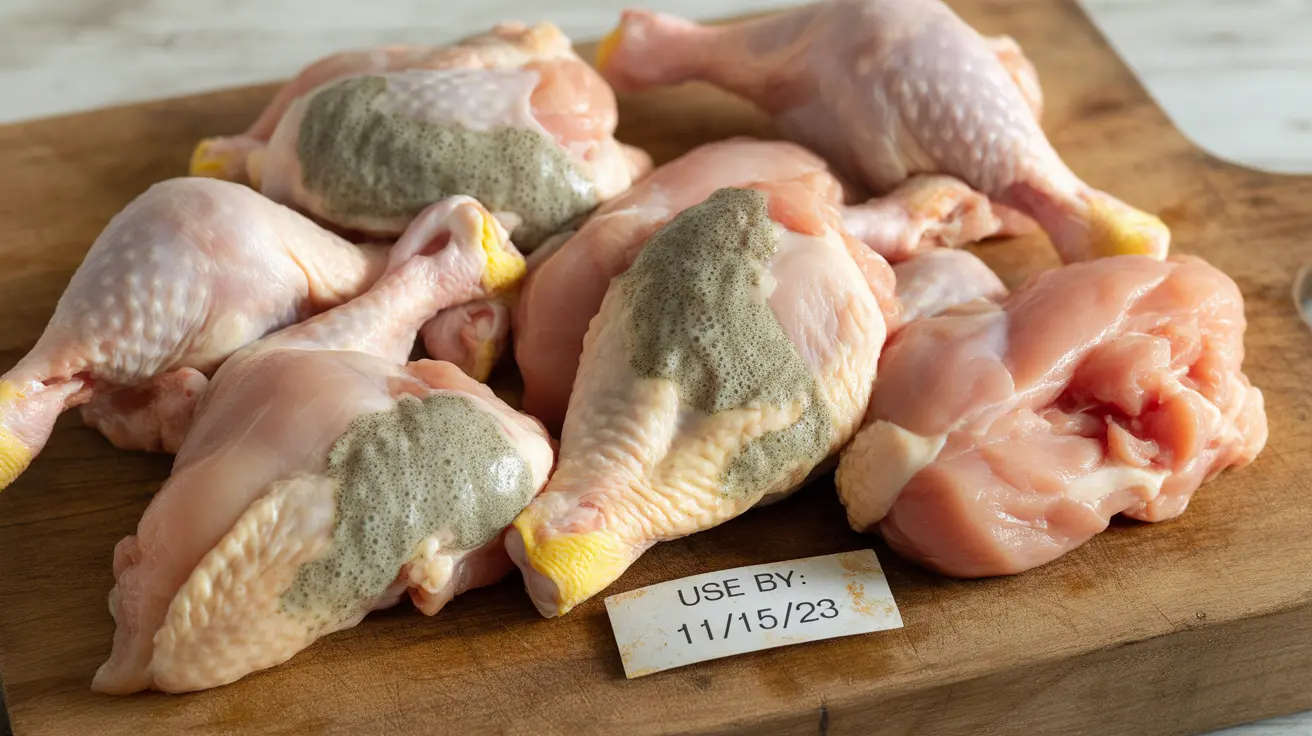Understanding how to identify spoiled chicken is crucial for food safety and preventing foodborne illness. Whether you're a home cook or simply managing your weekly groceries, being able to recognize the signs of spoiled chicken can protect you and your family from potentially dangerous bacteria like Salmonella and E. coli.
This comprehensive guide will help you understand the key indicators of chicken spoilage and provide essential storage tips to keep your poultry fresh and safe for consumption.
Visual Signs of Spoiled Chicken
The appearance of chicken can tell you a lot about its freshness. Fresh raw chicken should have a pink, flesh-colored hue. If you notice any of these visual changes, it's likely your chicken has spoiled:
- Gray or green discoloration
- Dark spots or mold growth
- Dried out, darker edges
- Yellow or pale patches
For cooked chicken, watch for any signs of mold growth or unusual color changes from its original cooked appearance.
The Smell Test: A Reliable Indicator
One of the most reliable ways to detect spoiled chicken is through its smell. Fresh chicken has virtually no odor or, at most, a very mild smell. When chicken goes bad, you'll notice:
- A strong, unpleasant odor
- Sour or ammonia-like smells
- Rotten egg scent
If you detect any of these odors, it's best to err on the side of caution and dispose of the chicken immediately.
Texture Changes That Signal Spoilage
The texture of chicken can provide important clues about its freshness. Fresh raw chicken should feel moist but not slimy. Watch out for these texture warning signs:
- Sticky or slimy coating
- Unusually soft or mushy consistency
- Tacky surface feeling
- Changes in firmness
Proper Storage Guidelines
To maximize chicken freshness and safety, follow these storage guidelines:
Refrigeration
- Raw chicken: 1-2 days at 40°F (4°C) or below
- Cooked chicken: 3-4 days at 40°F (4°C) or below
Freezer Storage
- Raw chicken: Up to 9 months at 0°F (-18°C)
- Cooked chicken: Up to 4 months at 0°F (-18°C)
Always store chicken in sealed containers or wrapped tightly in plastic wrap or aluminum foil to prevent cross-contamination.
Safe Handling Practices
Proper handling is essential for maintaining chicken safety:
- Use separate cutting boards for raw chicken
- Wash hands thoroughly before and after handling
- Clean all surfaces that contact raw chicken
- Never wash raw chicken (spreads bacteria)
- Use a meat thermometer to ensure proper cooking temperature (165°F/74°C)
Frequently Asked Questions
How can I tell if raw chicken has gone bad by looking at its color and texture?
Fresh raw chicken should be pink in color with a slightly glossy, moist texture. If you notice gray or green discoloration, dark spots, or a slimy coating, the chicken has likely spoiled.What does spoiled chicken smell like and why is smell a reliable sign of spoilage?
Spoiled chicken typically has a strong, unpleasant odor that can smell sour, rancid, or like ammonia. This smell occurs due to bacterial growth and is one of the most reliable indicators of spoilage because these odors develop before visible signs appear.How long can raw and cooked chicken be safely stored in the refrigerator before it goes bad?
Raw chicken can be safely stored in the refrigerator for 1-2 days at 40°F (4°C) or below. Cooked chicken can last 3-4 days when properly refrigerated.What are the safest ways to store and handle chicken to prevent foodborne illness?
Store chicken in sealed containers or wrapped tightly, maintain proper refrigeration temperatures, use separate cutting boards, wash hands thoroughly, and cook to 165°F (74°C) internal temperature.Is it safe to eat chicken that has a slimy texture even if it looks normal?
No, a slimy texture is a clear sign of bacterial growth and spoilage, even if the chicken appears normal otherwise. Never consume chicken with a slimy coating or unusual texture.




